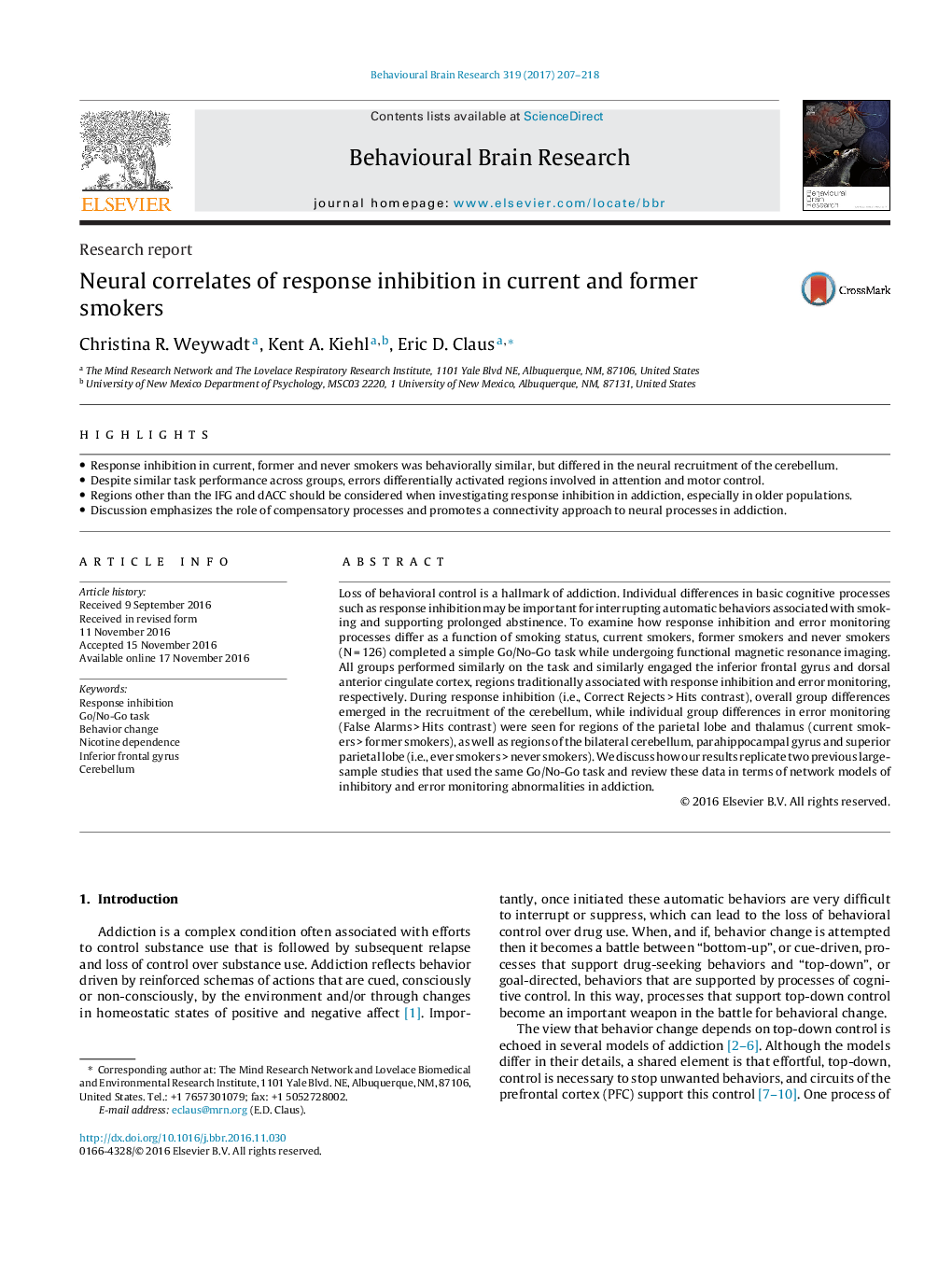| کد مقاله | کد نشریه | سال انتشار | مقاله انگلیسی | نسخه تمام متن |
|---|---|---|---|---|
| 5735302 | 1612914 | 2017 | 12 صفحه PDF | دانلود رایگان |
- Response inhibition in current, former and never smokers was behaviorally similar, but differed in the neural recruitment of the cerebellum.
- Despite similar task performance across groups, errors differentially activated regions involved in attention and motor control.
- Regions other than the IFG and dACC should be considered when investigating response inhibition in addiction, especially in older populations.
- Discussion emphasizes the role of compensatory processes and promotes a connectivity approach to neural processes in addiction.
Loss of behavioral control is a hallmark of addiction. Individual differences in basic cognitive processes such as response inhibition may be important for interrupting automatic behaviors associated with smoking and supporting prolonged abstinence. To examine how response inhibition and error monitoring processes differ as a function of smoking status, current smokers, former smokers and never smokers (N = 126) completed a simple Go/No-Go task while undergoing functional magnetic resonance imaging. All groups performed similarly on the task and similarly engaged the inferior frontal gyrus and dorsal anterior cingulate cortex, regions traditionally associated with response inhibition and error monitoring, respectively. During response inhibition (i.e., Correct Rejects > Hits contrast), overall group differences emerged in the recruitment of the cerebellum, while individual group differences in error monitoring (False Alarms > Hits contrast) were seen for regions of the parietal lobe and thalamus (current smokers > former smokers), as well as regions of the bilateral cerebellum, parahippocampal gyrus and superior parietal lobe (i.e., ever smokers > never smokers). We discuss how our results replicate two previous large-sample studies that used the same Go/No-Go task and review these data in terms of network models of inhibitory and error monitoring abnormalities in addiction.
Journal: Behavioural Brain Research - Volume 319, 15 February 2017, Pages 207-218
